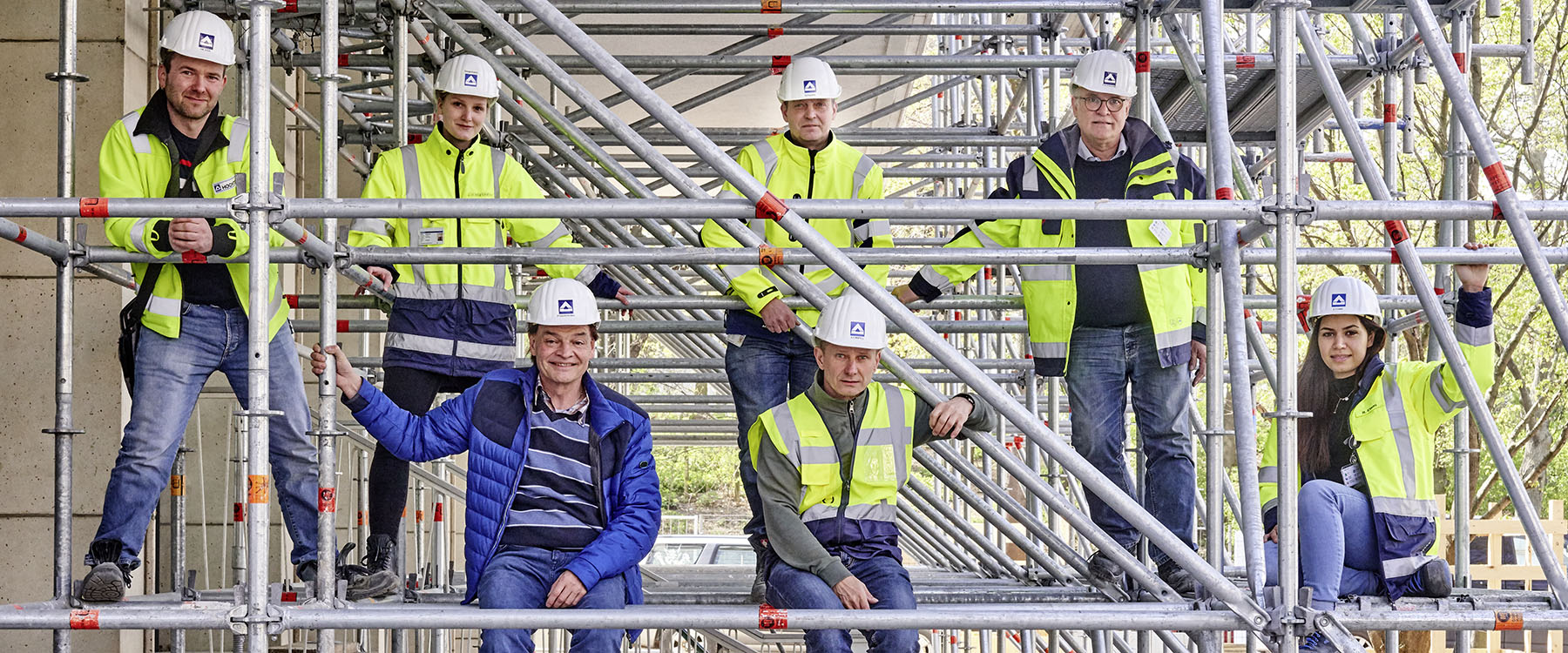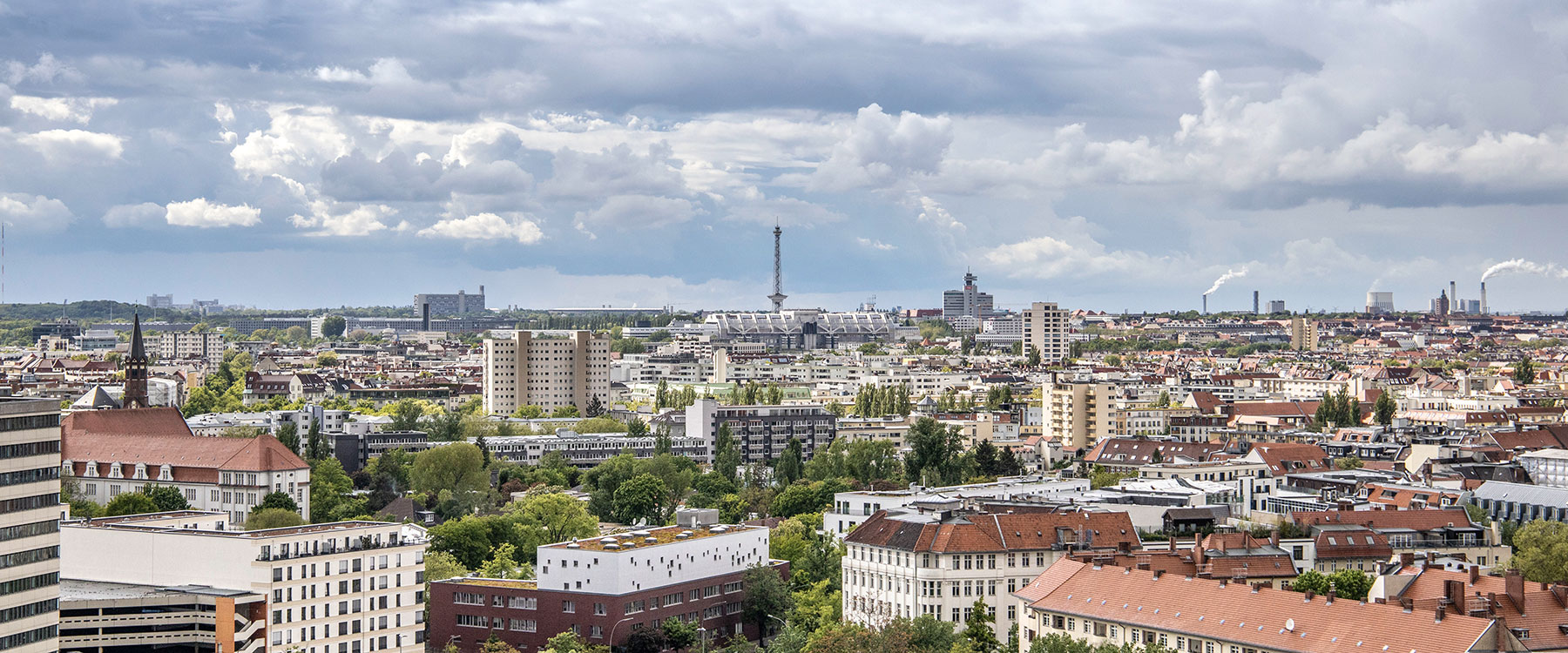Rejuvenation for a giant
Once the tallest building in West Berlin, it is now in urgent need of a complete overhaul-the former headquarters of the Senate Department for Urban Development and Housing. HOCHTIEF is tackling this mammoth task by 2023, not only giving the 1952 high-rise and its three annexes a new coat of paint but also securing their future with a general refurbishment. And it is being done with „janz viel Jefühl“ (a lot of feeling), as the Berliners say.
The team led by project manager Harry Nickel is committed to preserving the listed building fabric. In doing so, they are preserving the architectural treasures from the 1950s, such as the facade mosaic or the staircases, and reviving the paternoster.
Our team
Harry Nickel
Harry Nickel
That sounds a bit like a cliché. But Harry Nickel is serious: "The boss can only be as strong as his team." Nickel is the boss, quite correctly the project leader in the rejuvenation of the administration building. After decades in the industry, the 61-year-old knows what he's talking about. Open communication, trust in the employees - then building with and for him works (almost) by itself. Or as the boss puts it with typical Berlin humor: "A good boss is bored all day because the squad is working." The engineering graduate can no longer list all the HOCHTIEF projects that were completed under his supervision. But the enthusiastic recreational sportsman (including tennis, jogging, hiking and motorcycling) can still remember some of them, such as the renovation of the Wannsee lido and the Charlottenburg Gate or the conversion of Kranzler Eck. In the 30 years that Nickel has been working for HOCHTIEF, a lot has changed. Not just construction as such. His job description is also different. "Today, a construction manager has to pay much more attention, take on a whole range of administrative and regulatory tasks. A large part of my original job is now done by the foreman." That works in part because independent work (see above) has always been a hallmark of HOCHTIEF. Says the boss.
Johanna Stegemann
Johanna Stegemann
Johanna Stegemann's work will make the interior of the listed building fit for the future. Ultimately, the premises are to meet the most modern requirements, with an energetic building automation system as a highlight. As construction manager, Stegemann is responsible for the finishing of the high-rise building, for ceilings, connections, etc. The Berlin native joined HOCHTIEF in the summer of 2018, having previously worked in bridge construction, at that time on the client side. However, she wanted more opportunities to exert influence, to be at the forefront of the construction process. So out to a construction site. And so she decided to work for HOCHTIEF. At the age of 22 at the time, already in construction management? "Of course, many are surprised. But: Competence is not primarily a question of age. That's why it's not an issue on the construction site," emphasizes the engineering graduate. So far, she has had the privilege of working on two projects as a site manager for HOCHTIEF. The first, a new construction project, was then also the subject of her final thesis. "Working on this listed building, however, gives me a completely different insight into the world of construction," she reveals. Her wish for the future: to put her professional know-how into practice in her own home.
Mirco Hesse
Mirco Hesse
"For me, refurbishment means finding solutions to unforeseen problems," is how Mirco Hesse describes his job. As the foreman responsible for the high-rise building, he has plenty of opportunity to do this (in collaboration with site manager Johanna Stegemann). Or as the Berliner puts it: "I fight on all fronts. And on most of them, a solution has to be found quickly." 150 people from HOCHTIEF and third-party companies are currently working on the construction site. The industrial HOCHTIEF colleagues have to be coordinated and deployed wherever there is a need—in the truest sense of the word. Hesse says: "There is enough work, but not everything is equally important at any given time." You (i.e. the 41-year-old) have to set priorities. To ensure that HOCHTIEF employees don't end up empty-handed, Mirco Hesse also takes care of the material to be installed, always keeping an eye on delivery times, prices, and so on. "If I order everything at once, I have to store it somewhere. If everything comes in parts, i.e. 'just in time', I don't have that problem, but we have to pay a delivery fee every time." With so much planning and coordination on the job, the Hessian likes to switch off at home with his family while watching a series.
Jörg Heller
Jörg Heller
The picture is a bit crooked. But as foreman, Jörg Heller is something like the "mother of the construction site" on Württembergische Strasse. "I'm not only the link between site management and the other foremen, but I also look after safety and cleanliness, water, electricity, fences, in fact everything that keeps the construction site running," says the 58-year-old. Heller, who has been with HOCHTIEF since 1991, completed a masonry apprenticeship in the GDR and was then promoted to youth brigadier. To those who don't know, that's the equivalent of column leader. When the father of three boys says that construction is his passion, you immediately buy it. After all, he has been hanging around construction sites since he was a toddler, building huts and the like out of whatever he could find. Today, the Berlin native passes on the expertise he has gained in the course of his professional life to younger people. He shows them how to work in a structured way, how to lay bricks properly, how to plaster, how to switch on. All with a healthy dose of respect for each individual colleague. And the self-assurance of a construction professional. "Nothing motivates people more than when you give them the good feeling that their work will succeed," Jörg Heller knows. "That's when any fears and self-doubt usually disappear all by themselves."
Roxana Etami
Roxana Etami
When Roxana Etami completed her architectural studies in the Iranian capital Tehran in February 2014, she made a strong decision: The young woman relocated to Germany. "If you don't change, you can't progress," the 31-year-old says in retrospect. Etami first learned German for a year, passed the aptitude test and packed on a second course of study from 2016 onwards: she completed a master's degree in civil engineering at the Technical University of Central Hesse in Giessen. "I have always been interested in how the designs I created as an architect on paper or on the computer are realized. I wanted to get into practice, into building." In Berlin, she is responsible for the construction management of building components two, three and four on Württembergische Strasse, as well as for the entire materials handling technology, including elevators and paternosters. In doing so, she not only has to harmonize the client's wishes with the conditions on site, but also take into account the requirements of historic preservation. A very important issue here is accessibility. "That's why, for example, we will also install two lifting platforms, each of which will help to bridge a few steps and connect the Senate Administration with the canteen in the neighboring building, among other things," says Roxana Etami.
The giant in numbers
tiles decorate the facade mosaic
windows are modernized or replaced
stair treads
offices
meters high is the building
months of construction time must be enough
We are done...
… with a traditional building. As one of the first high-rise buildings in West Berlin, it has shaped the cityscape since the 1950s - the building at Württembergische Strasse 6. But even a classic needs a new start from time to time. In 2020, the go-ahead was given for a comprehensive modernization. Our HOCHTIEF team preserved the historical substance, removed harmful substances and integrated modern standards.
The old concrete façade now shines in new splendor - including 45,300 tiles that our colleagues have restored or replaced. Modernity has found its way inside: 35,000 square meters now offer modern offices, flexible meeting rooms and a smart control system for lighting, heating and air conditioning.
And there's more:
- 1,838 modernized windows for a better energy balance,
- new energy-efficient elevators,
- state-of-the-art fire protection,
- green roof including a photovoltaic system to generate clean energy.
Staff from the Senate Department for Urban Development will be moving into their offices here in the next few weeks.
Soon we'll be aiming high
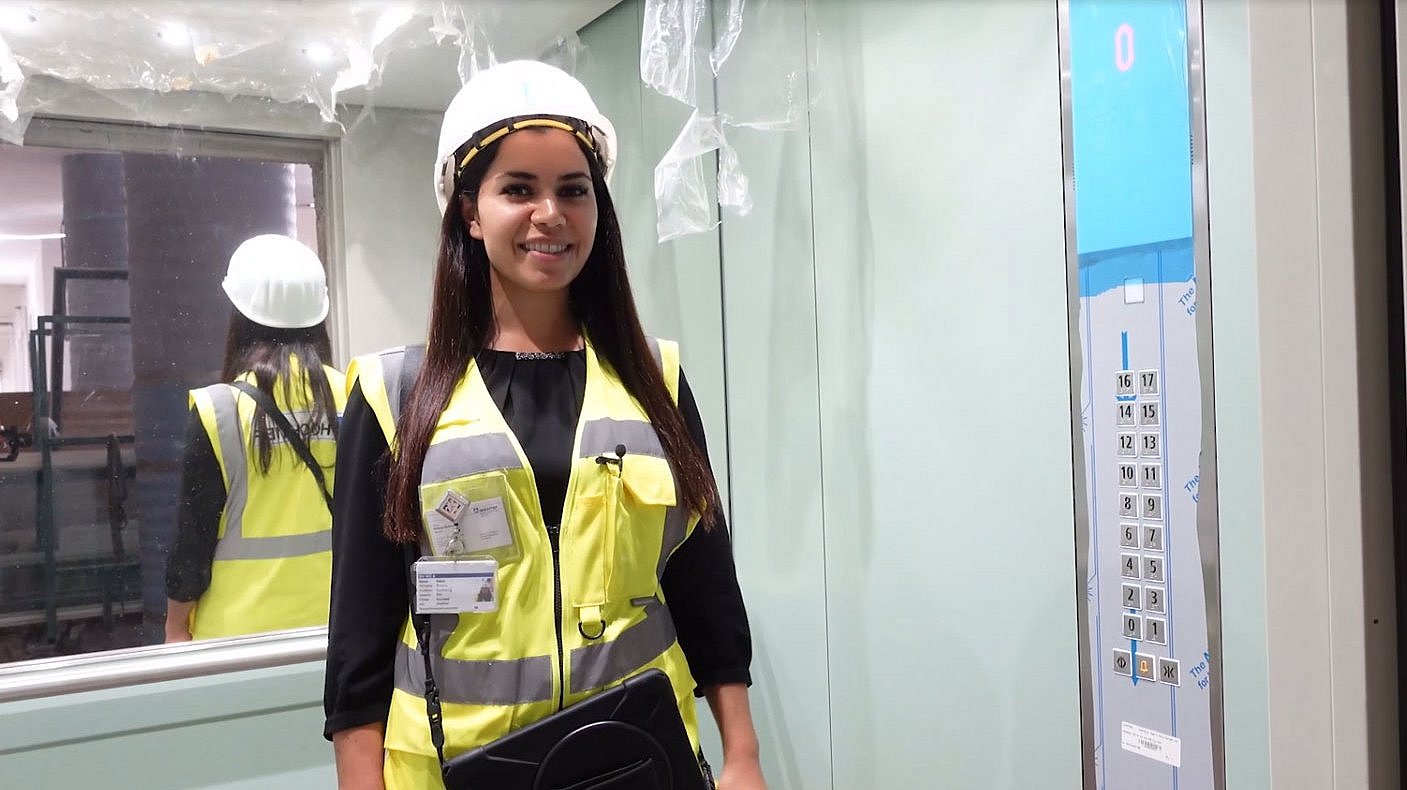
Felix lifts 230 kilos. Without any training at all.
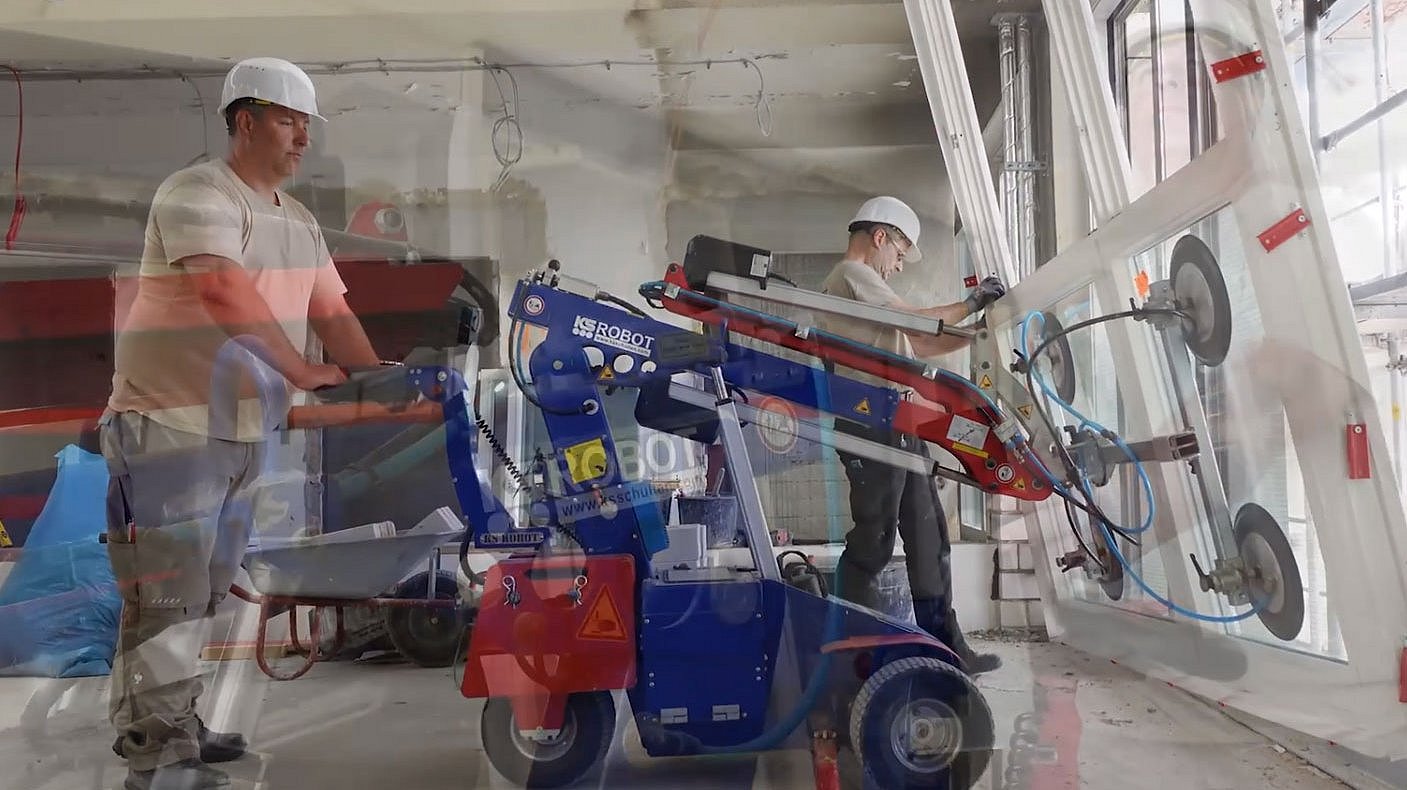
A high-rise for dwarf bats
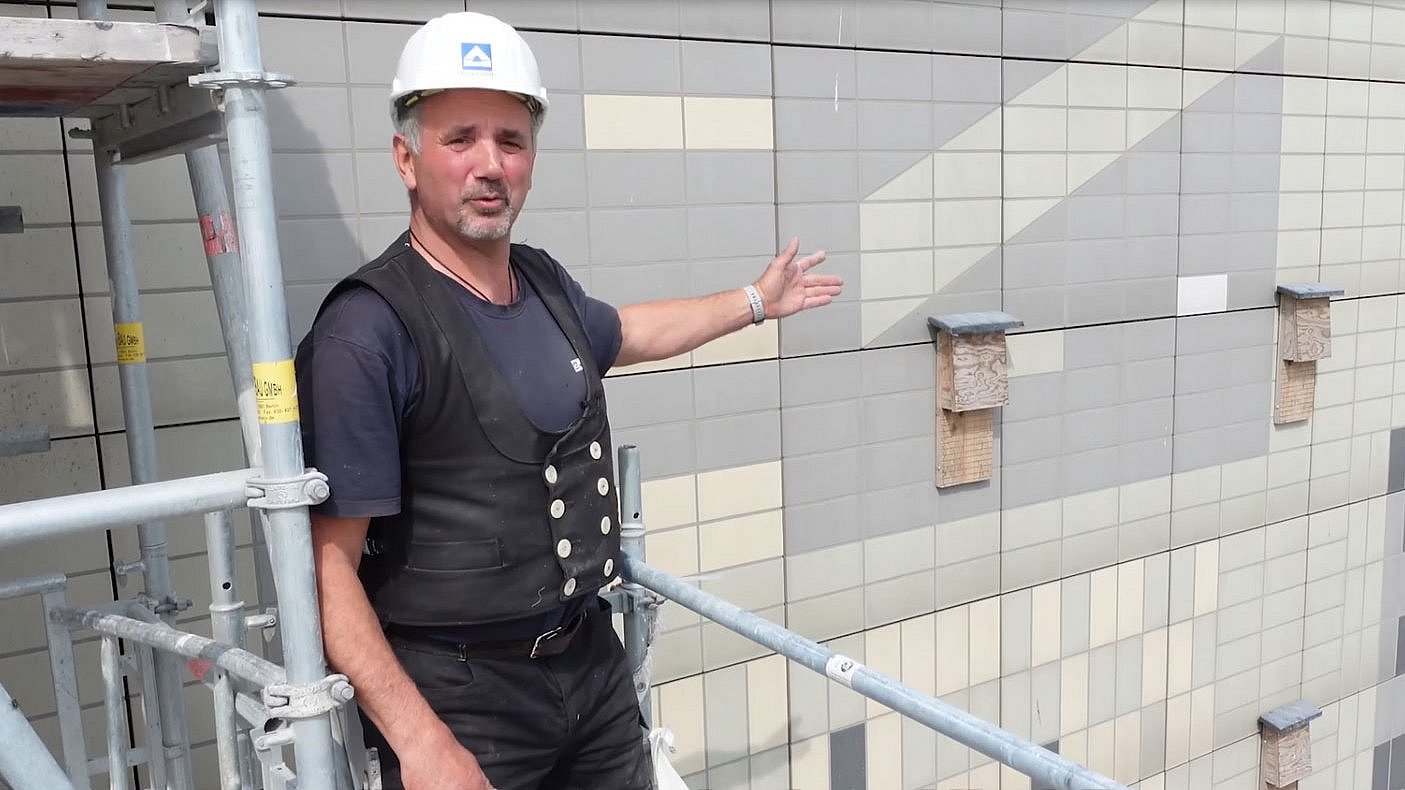
New outfit for the giant
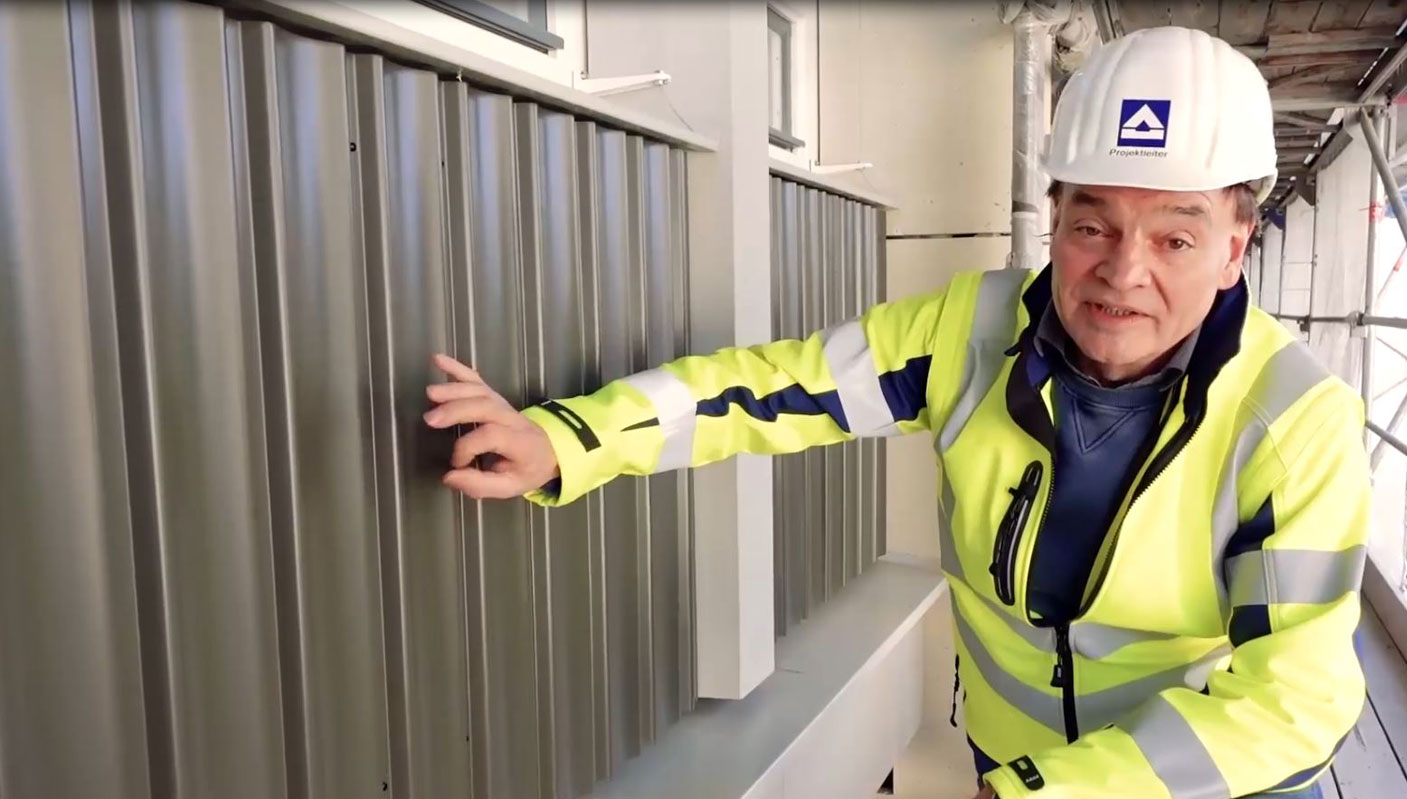
A lift for the lift
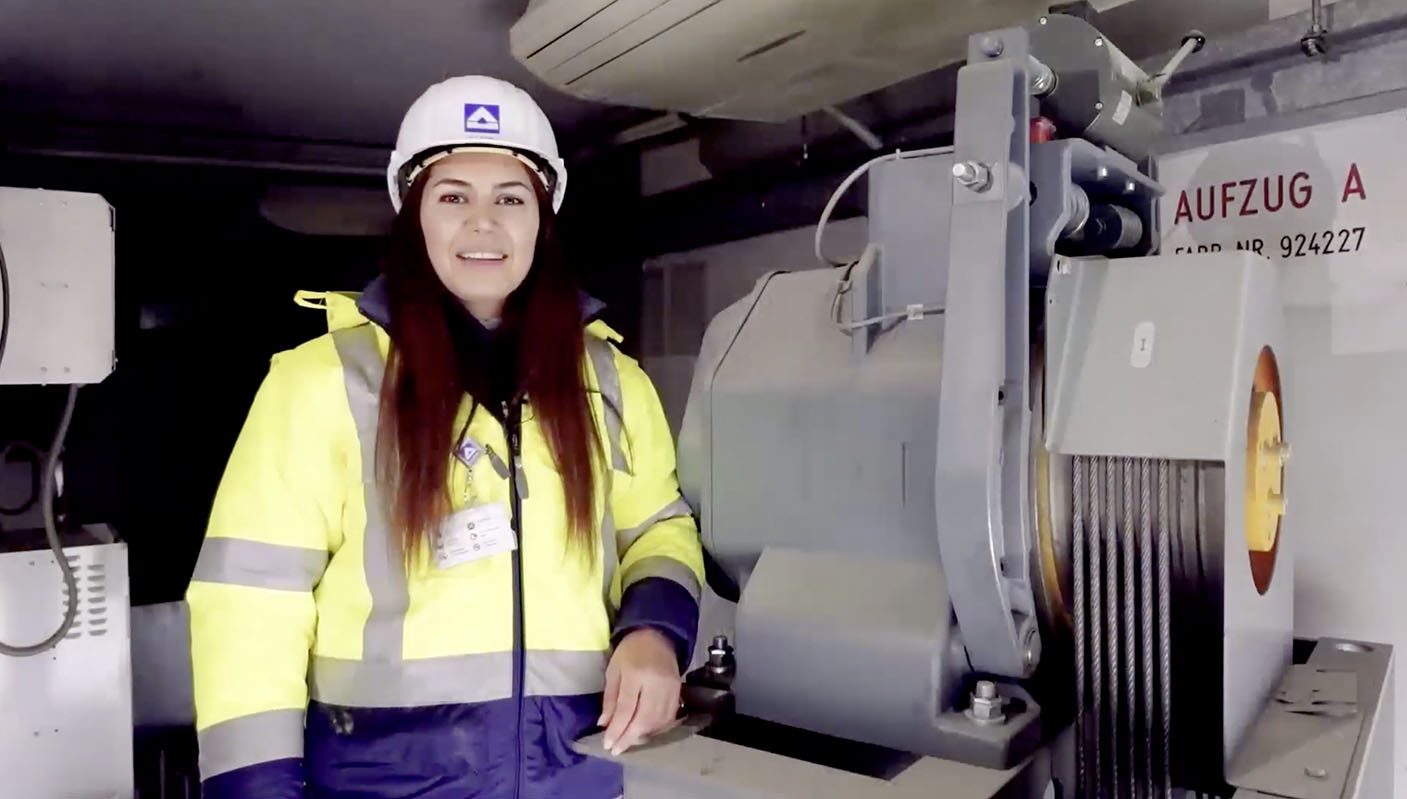
Freshly plastered
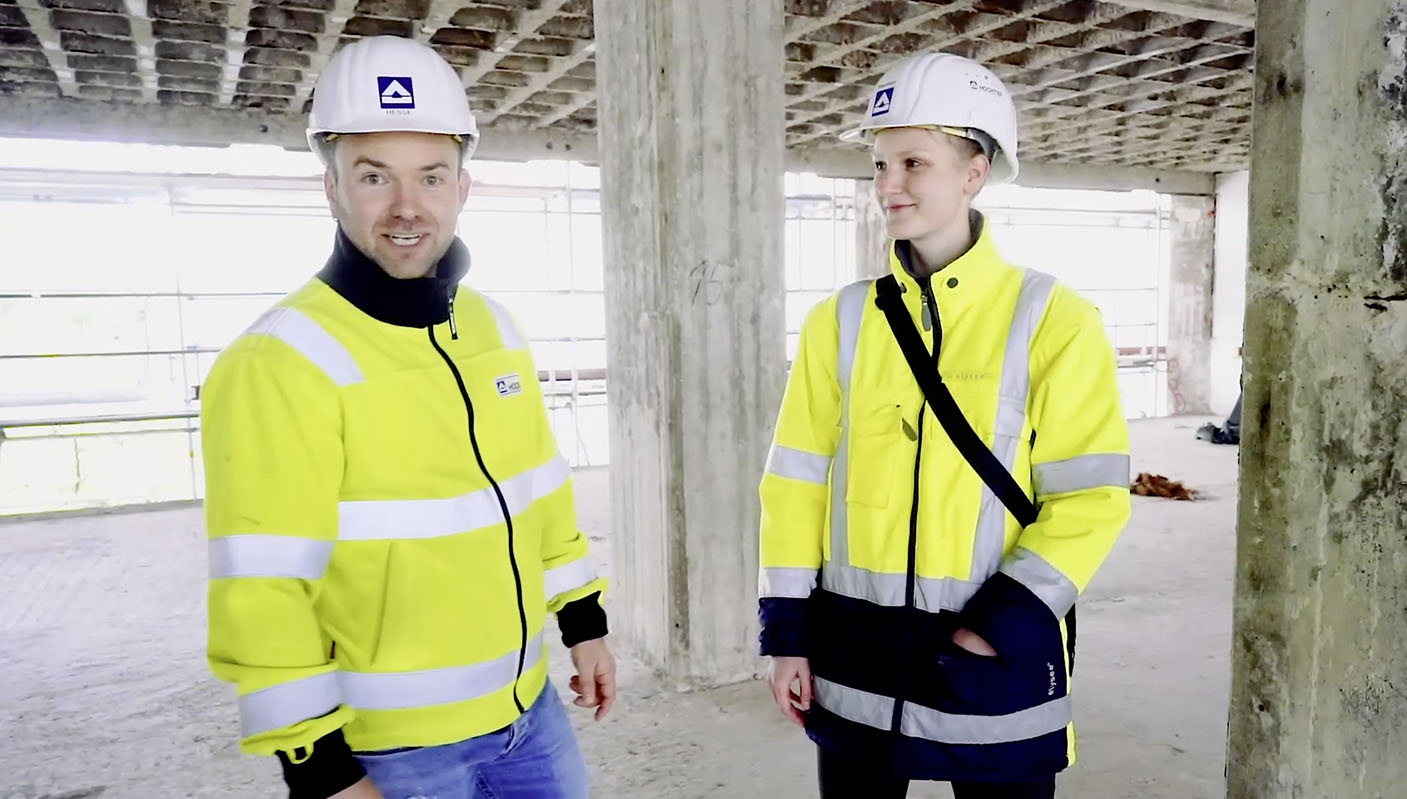
New paint for old windows
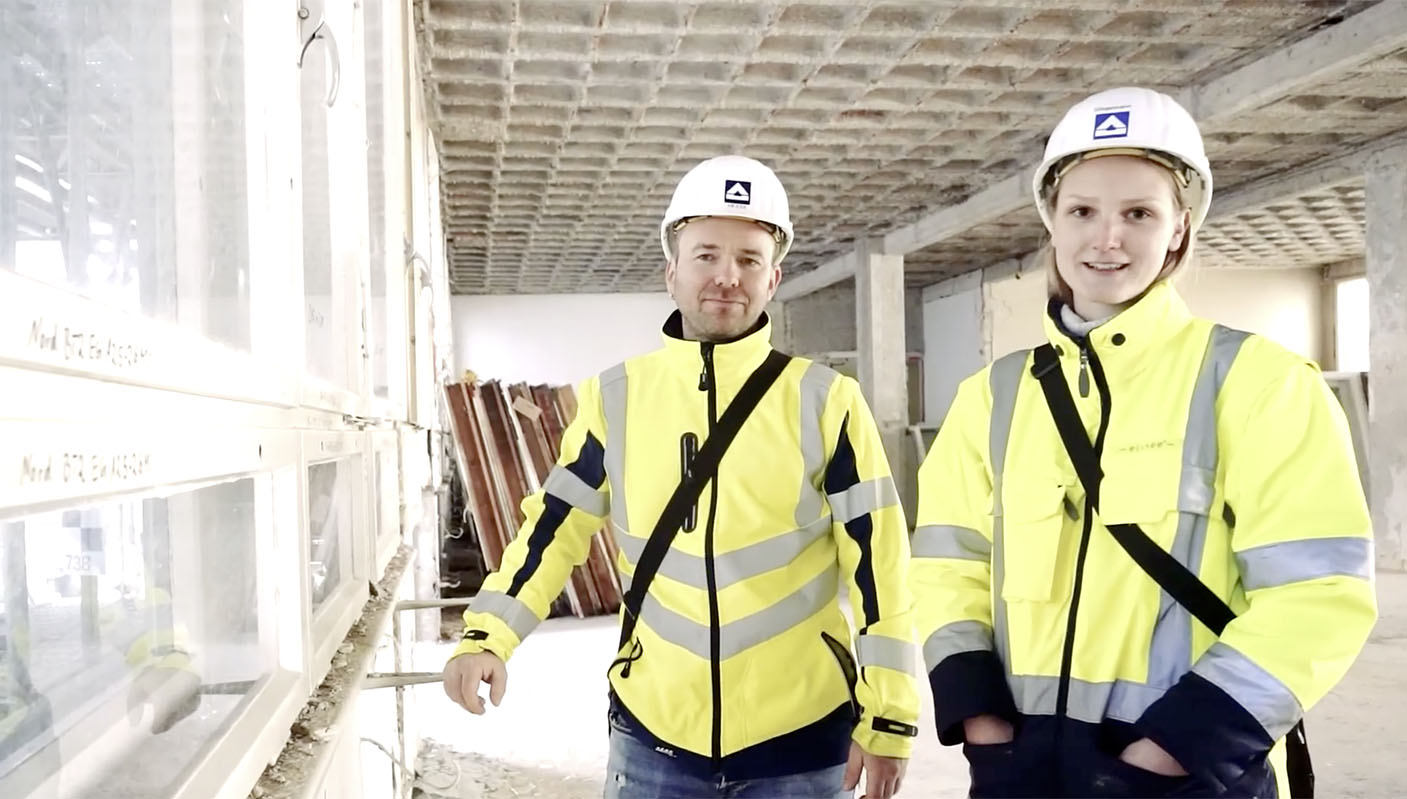
Fire protection with straw ceilings
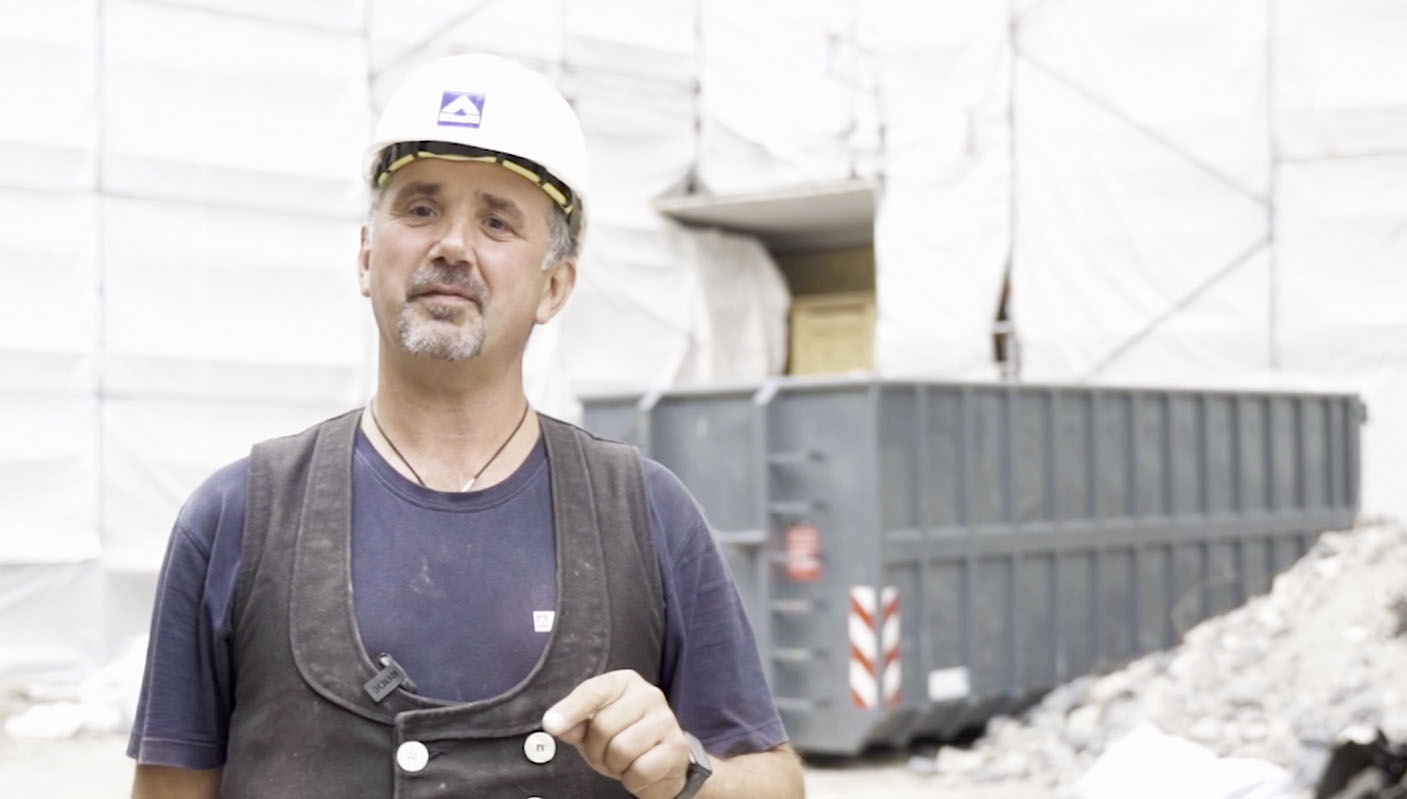
High-rise building with Fifties charm
The building was constructed from 1954 to 1956 according to the plans of Werry Roth in reinforced concrete. From the years of the economic miracle until well into the 1970s, concrete was the building material par excellence, albeit with limited durability. So the first task was to refurbish the listed concrete façade to preserve its external appearance. A task for real refurbishment experts. Our team has decades of experience in this field.
Inside the buildings, on the other hand, modernity is taking hold. "On 35,000 square meters, rooms are being created that meet the demands of future working environments," says Urban Development Senator Sebastian Scheel, describing the future headquarters of his administration. One highlight will be the building's energy automation system, which will allow lighting and heating to be controlled centrally. Sustainability is the top priority for the refurbishment. For example, the listed renovation of the buildings on Württembergische Strasse could become the first project to receive certification under the federal government's sustainable building rating system.
